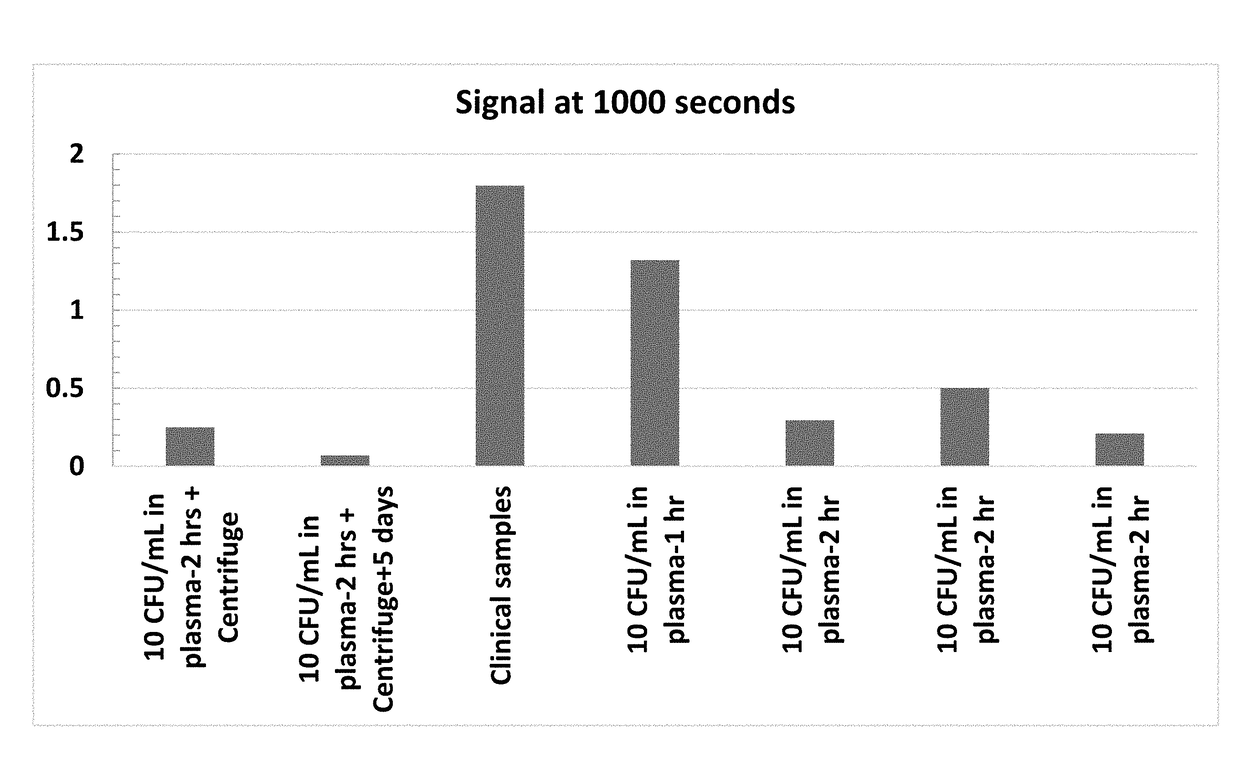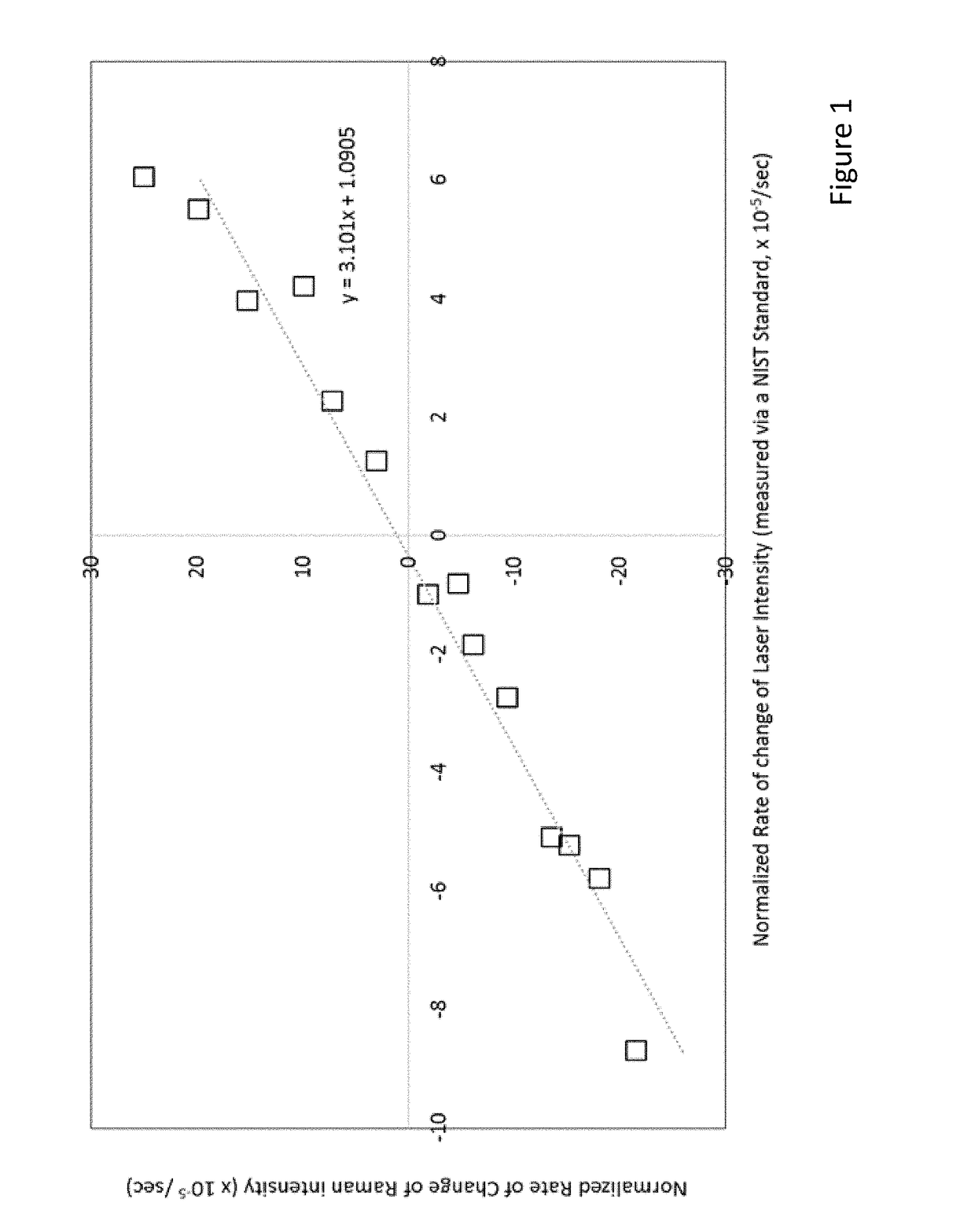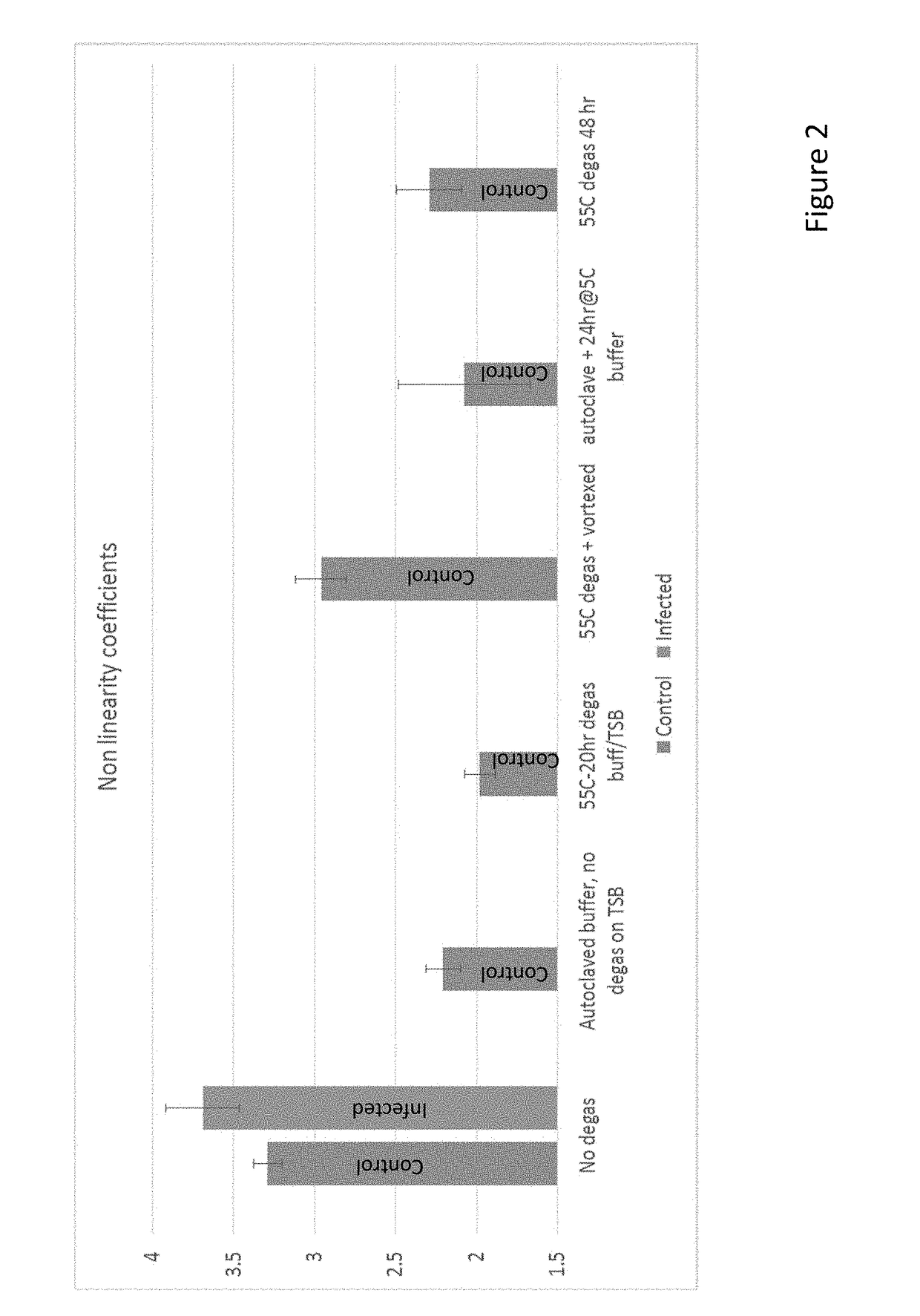Spectroscopic methods to detect and characterize microorganisms
a microorganism and spectroscopic technology, applied in the field of spectroscopic methods to detect and characterize microorganisms, can solve the problems of poor quality spectra and slow application of this method to the study of the conformation of biological molecules
- Summary
- Abstract
- Description
- Claims
- Application Information
AI Technical Summary
Benefits of technology
Problems solved by technology
Method used
Image
Examples
example 1
[0341]FIG. 2 depicts an example of non-linear Resonant Raman spectroscopy for characterizing small changes in a composition. The samples contain lycopene that is non-covalently associated into albumin (as described in U.S. Patent Publication No. 2016 / 0324933, the disclosure of which is herein incorporated by reference), to which a nutritional buffer was added to support microbial metabolism, and a buffer that maintains the pH at 7.2.
[0342]In these examples, non-linear Resonant Raman spectroscopy measures the Resonant Raman spectrum of lycopene and the magnitude of the Raman peaks are a sensitive function of small changes in the composition. Since the lycopene is incorporated into albumin, the non-linearity of the Resonant Raman response (i.e., the calculated non-linear Resonant Raman coefficient) characterizes the environment provided by albumin, and since albumin is designed to solubilize molecules that are insoluble in water, the non-linearity of the Resonant Raman will respond to...
example 2
[0345]Bilirubin is a powerful antioxidant present in serum and has very weak optical absorption at 532 nm. In this example, bilirubin is used to control the signal in non-linear Resonant Raman spectroscopy and is used to improve signal-to-noise ratio when characterizing test samples.
[0346]In the samples described, bilirubin is added and is non-covalently associated with an albumin protein. FIGS. 3 and 4 depict the effect of bilirubin on the average Resonant Raman peak intensity. FIG. 3 depicts the average Raman peak height from 4 uninfected control samples and 3 samples infected with 10 CFUs of S. aureus. In all cases, the reagent includes lycopene incorporated into albumin and diluted into 4 mL of buffer medium and containing 0.5× of a nutritional broth to enable bacteria metabolism. FIG. 4 depicts the average Raman peak height from 4 uninfected control samples and 3 samples infected with 10 CFUs of S. aureus with 1 μM of added bilirubin. By comparison with FIG. 3, the dip in the i...
example 3
[0349]Without being bound to any particular theory or mechanism of action, bilirubin in the subject methods enhances the signal in non-linear Resonant Raman spectroscopy by: (a) scavenging free radicals generated by the laser light. This reduces the artifact that can interfere with the signal, and so reduces the standard deviation around the control samples. Thus, the standard deviation around the average rates of change of the lycopene peaks in uninfected samples decreases as bilirubin is added to the assay (b) scavenging free radicals generated by the metabolic activity of the microorganism present in the sample. This can slow down the changes caused by the microorganism, in particular when changes to the sample are too rapid to observe cleanly in the absence of bilirubin.
[0350]FIG. 7 shows a plot of the signal-to-noise ratio of samples that contain lycopene non-covalently associated with an albumin protein and different amounts of bilirubin as a function of data collection time. ...
PUM
 Login to View More
Login to View More Abstract
Description
Claims
Application Information
 Login to View More
Login to View More - R&D
- Intellectual Property
- Life Sciences
- Materials
- Tech Scout
- Unparalleled Data Quality
- Higher Quality Content
- 60% Fewer Hallucinations
Browse by: Latest US Patents, China's latest patents, Technical Efficacy Thesaurus, Application Domain, Technology Topic, Popular Technical Reports.
© 2025 PatSnap. All rights reserved.Legal|Privacy policy|Modern Slavery Act Transparency Statement|Sitemap|About US| Contact US: help@patsnap.com



